Home » Hunting Videos » Lapland Grouse – Capercaillie Hunting Sweden
Lapland Grouse – Capercaillie Hunting Sweden

Kevin is the lead filmmaker at Project Upland. He is…
Journey to the boreal forests of Sweden in pursuit of capercaillie, black grouse, and willow grouse from the cover story of our Spring 2023 issue of Project Upland Magazine
Common wisdom says that to connect with someone we don’t know, the starting place is shared interests and history. However, bonds can readily grow even when folks don’t have much in common. One example of such an unlikely connection was between Miguel Canaverde, a Portuguese transplant to the southern region of Sweden, and me, a northeastern U.S. native. Although our mutual Instagram followers and love of bird dogs were commonalities in our improbable friendship, it was our differences that drew Miguel and I together.
Lapland Grouse won The Monocular 2022 Hunting Film Awards for Best Professional Hunting Videos.
“Those European woodcock are fascinating, Miguel,” I texted him last year, “How do they handle for the dog? Do they run or hold tight? What do they taste like? What kind of habitat do you find them in?” He answered all of my questions with thoughtful, descriptive replies. Miguel countered with his own questions, which I answered with pictures, videos, and verbal depictions of my experiences here in the U.S. The differences in experiences and pursuits enabled us to build a friendship in spite of a 4,000-mile gap spanning oceans and continents.

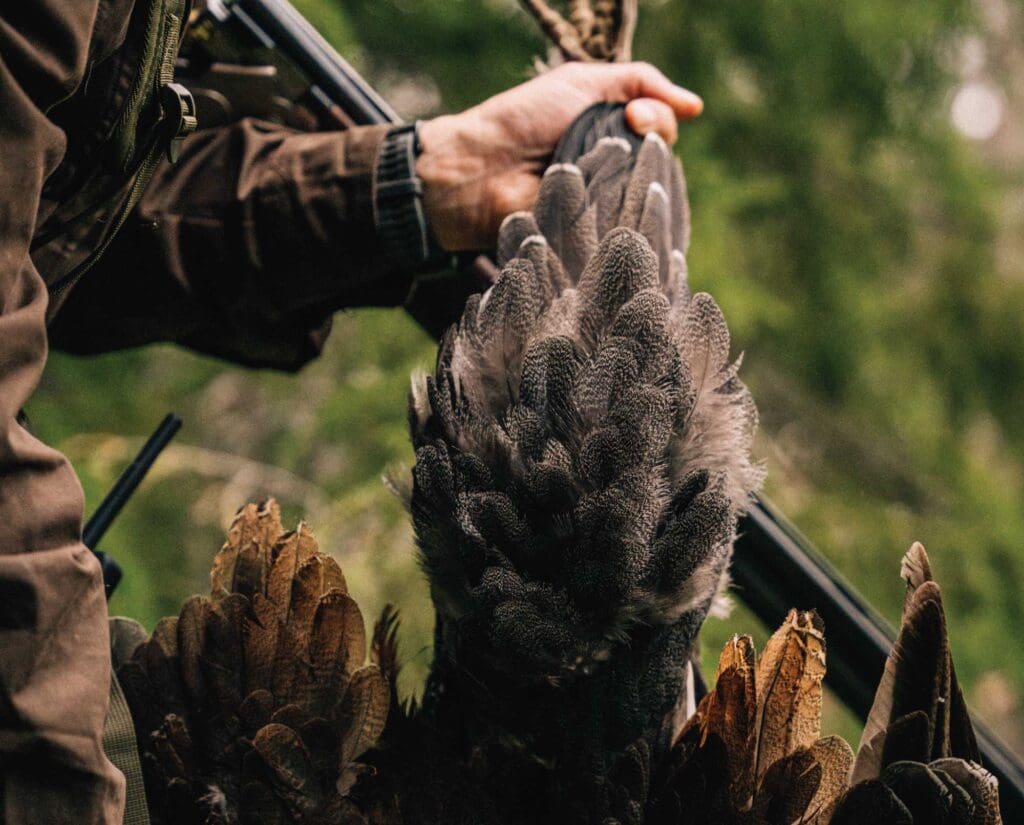
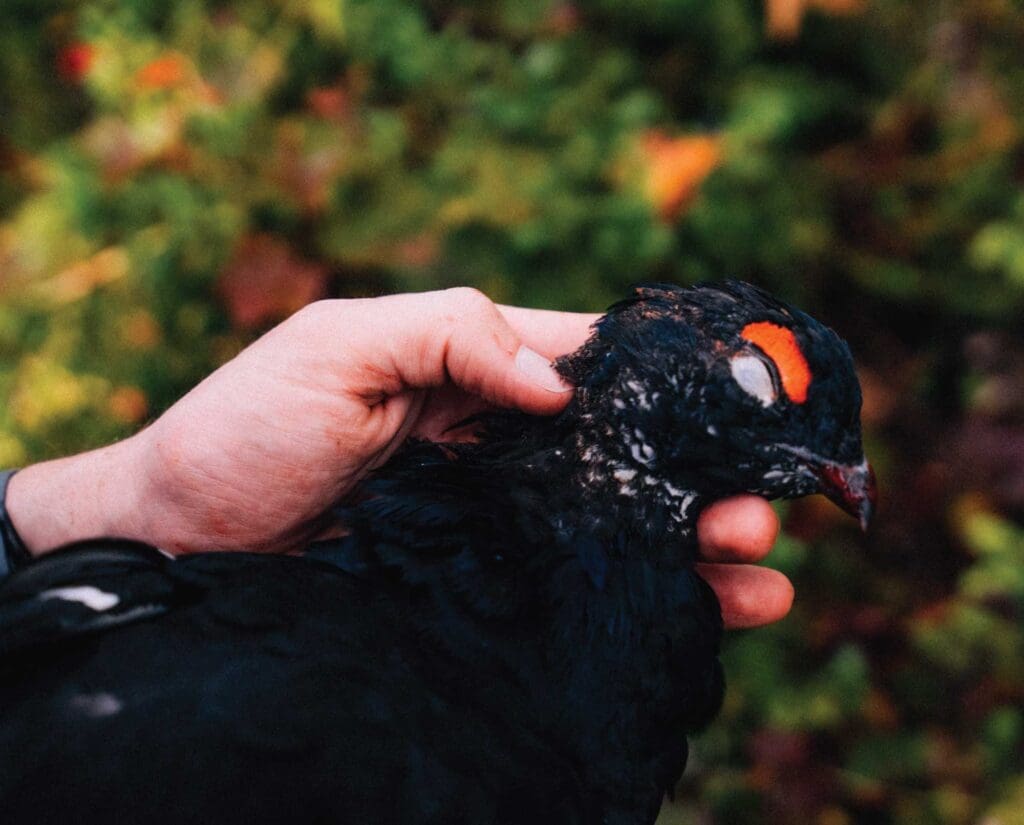
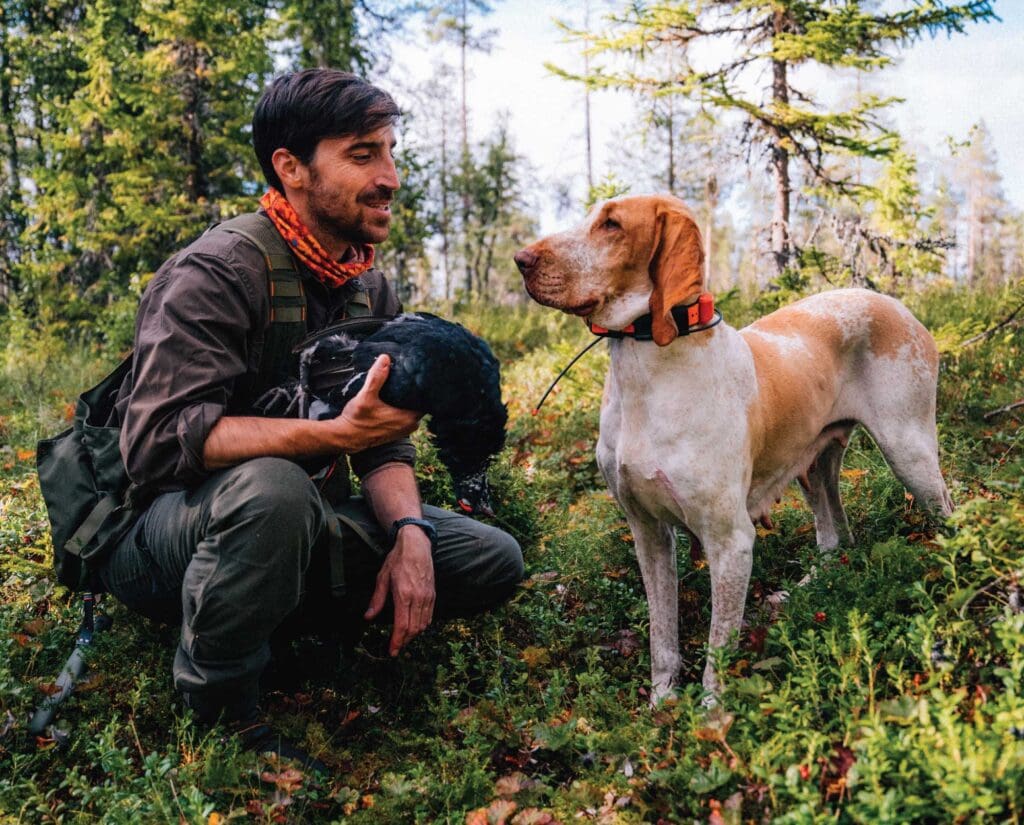
Miguel’s lifelong dream was to move to Scandinavia. He took the first work opportunity that he could to relocate to Sweden. “I moved from Portugal to Sweden ten years ago. The bird hunting and the nature were what brought me here and what made me stay. I have a passion for these birds.” Needless to say, he has never looked back. His new homeland has allowed him to mature as an upland hunter in a beautiful part of the world. Sweden has a diverse landscape that includes tundra, boreal forest, and mountainous habitats. The hills, bogs, and knolls of these Nordic wildlands are home to an abundance of unique upland game species. Capercaillie, black grouse, and willow grouse (or ptarmigan) thrive in Sweden, and Miguel has found them all.
After our initial connection, we occasionally discussed how exciting it would be to experience each others’ upland lifestyles. We talked of Miguel chasing the infamous ruffed grouse in thick, forested New England coverts. We imagined me seeing capercaillie and black grouse erupting out of blueberry-covered bogs and spruce stands in Sweden’s boreal forest. And, of course, we longed to see each others’ dogs work.
“The first time I stepped in a boreal forest,I knew it was where I always wanted to be.”
Miguel Canaverde
I thought our ideas were out of reach. However, soon after we starting talking about visits, I scheduled a trip to Norway to create a marketing film for a small, Stockholm-based hand-knit beanie company. With my trip to Scandinavia already booked, I pitched the idea of a Project Upland film about Miguel and his Bracco Italiano, Chica. We knew it was a unique opportunity to tell a story about hunting foreign lands for birds that would be completely unfamiliar to those of us who hunt the North American forests. To my utter disbelief, I was finally going to join Miguel on a bird hunt in his neck of the woods.
Last August, Miguel and I met in person for the first time in an Ikea parking lot in southern Sweden, a few hours from his coastal home in Gothenburg. During the three hour road trip back to his place, our conversation was fast-paced and expansive in scope. Multiple times we confessed how excited we were that we were able to make this trip happen. We spent the next three days tirelessly exploring cover in the subarctic tundra and boreal forests, chasing Chica wherever her strong and sensitive Bracco nose took us.
On our first morning, Miguel was pouring over maps on his computer before we piled into his small SUV and traversed a network of well-maintained gravel roads. He called me over to describe the kind of cover he was looking for: old-growth boreal forests surrounded by blueberry bogs. As it turns out, blueberries are a main food source for both black grouse and capercaillie. I eagerly watched and listened, learning about this Nordic habitat while making comparisons to what I looked for back at home in Pennsylvania. After we dropped into our first cover, I noted the immense differences between the flora of Sweden and that of the thick, young forests of the northwoods.
Each new patch of old evergreens was full of possibilities. Chica left no dark corner or mossy knoll unchecked. With caution and poise, she sought our feathered quarry, stopping often to allow us to catch up. The birds behaved and allowed for plentiful shooting opportunities. Throughout my three days with Miguel, he brought each of the three available species to the bag.
The willow grouse were grouped up, making for an exciting flush. They were a comical sight as they cackled while flying out of sight, mostly unscathed. The solitary male black grouse reminded me of a mature ruffed grouse, fleeing on foot from Chica’s confident points and requiring cautious and experienced dog work. Nothing could have prepared me for the shock and awe of the flush of the mighty capercaillie.
“The solitary male black grouse reminded me of a mature ruffed grouse, fleeing on foot from Chica’s confident points and requiring cautious and experienced dog work.”
Kevin Erdvig
When it was my turn to take the gun for a walk, and after a skeptical Chica got over the fact that I was now going to shoot over her, we encountered a large family group of birds. After 250 yards of tracking, she brought me to the base of a large tree full of capercaillie. All at once, they flushed in all directions with a loud, yet strangely muted feathery blast. It was as if I had spooked a group of jake turkeys. Though they rocketed in every direction, I shouldered Miguel’s 12-gauge Beretta, and cracked off a shot at the bird closest to me. As it toppled to the ground, Chica was on it in a flash and happily brought it to me. Chica was still uneasy with me, but our somewhat strained relationship struck a new chord and I got upgraded in her mind. In that moment, I was tolerated, and perhaps even liked, by her.
It didn’t take much time for me to realize why Miguel had such a passion for this place and the wild creatures that live there. The quiet, almost melancholy scenery was an honor to traverse. I swapped Miguel’s gun out for my camera after that successful 20-minute walk, and was able to capture stunning videos and photos that could only offer the most limited glimpses of this beautiful Nordic terrain.
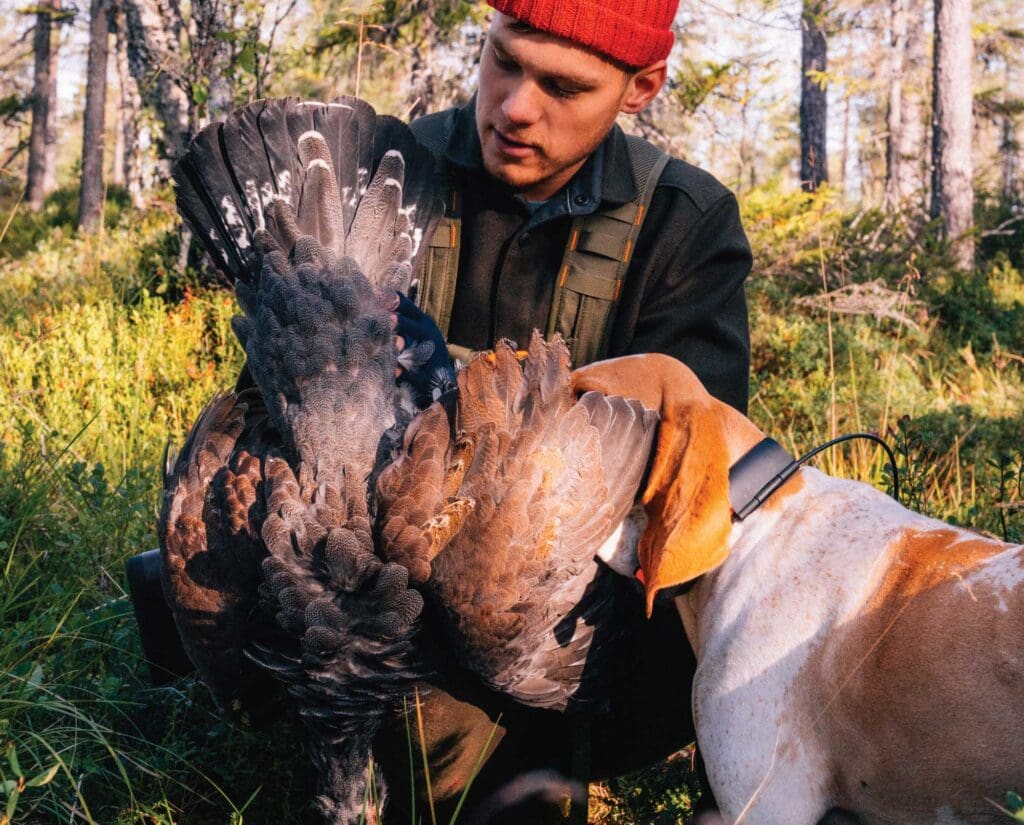
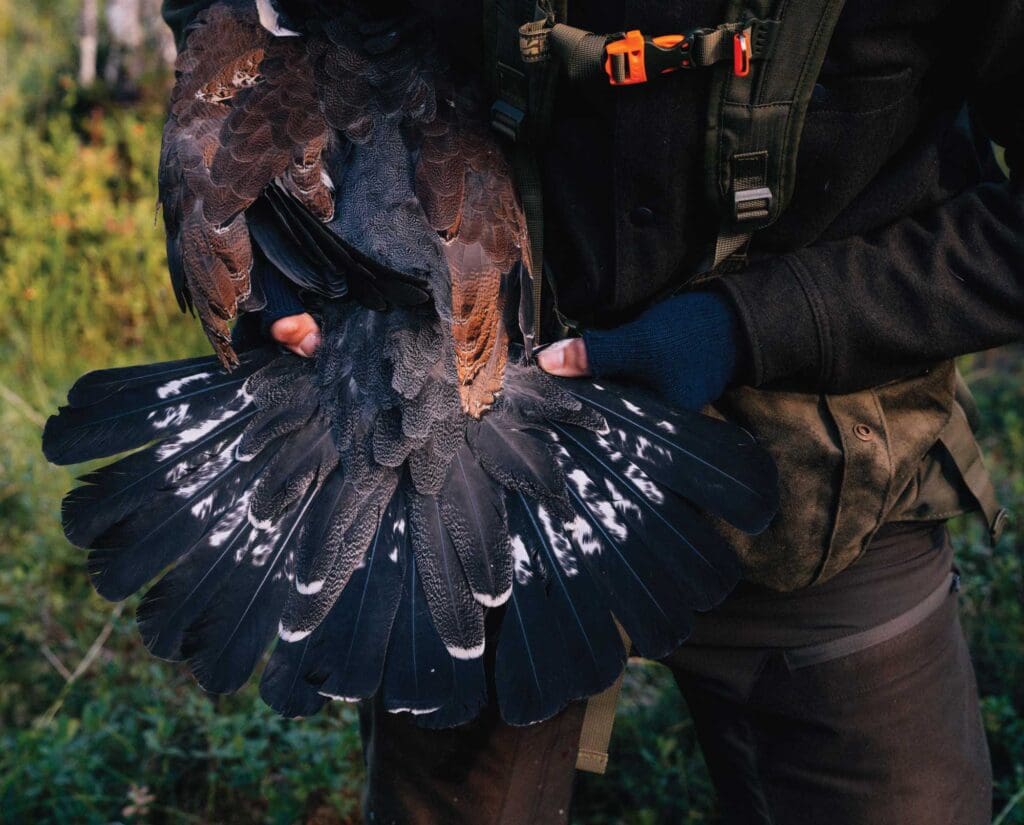
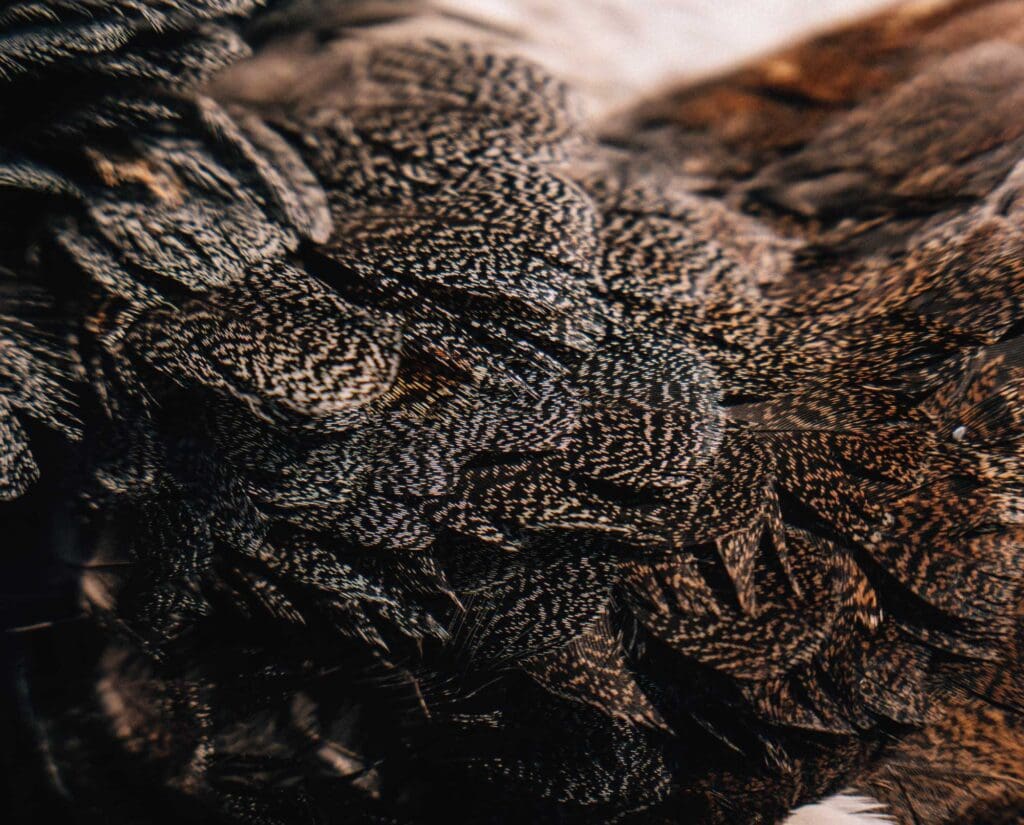

That afternoon, we sat in a patch of blueberries and ate until our mouths and hands were stained blue. Miguel pulled out his phone and perused possible locations to check for birds next. He beckoned me over to take a look and asked for my advice on where we should go.
Puzzled, I said, “I’m new to this country. I don’t understand these birds or their habitat like you do!”
Later that evening, Miguel revealed this was his first time hunting grouse with another person. It wasn’t until then that I finally understood why he asked me to collaborate with him even with my lack of experience in this wild tundra. I reflected on my own privilege of being surrounded by like-minded people all the time, fellow upland hunters that readily set aside weekends for “grouse camp.” I thought about my favorite parts of those trips. Besides the dogs and birds, the planning, scouting, cooking, and fellowship are the obvious high points of grouse camp.
Sweden is a country that is heavily focused on big game hunting. Miguel told me how people often give him funny looks and make sly remarks about bird hunting with dogs, as if it is somehow less than their way of hunting. Those that do enjoy upland hunting often keep to themselves and don’t yearn for community the same way Miguel does. No wonder he was having a difficult time finding people that shared his passion for birds, well-trained dogs, and wild spaces.
Miguel’s revelation made this trip even more important to me. I felt special to be a part of his first real grouse camp. I shared what made these gatherings of friends so special to me and explained that it was the biggest reason I got into bird hunting. I told him that it is what will inevitably keep me pursuing game birds with dogs. We most certainly plan to have our own Swedish camp again.
The rest of the trip brought more new experiences that became memories etched into my mind, punctuated by great dishes centered around our hard-earned forest grouse. By the end of the week, Miguel reached out to social media acquaintances and people who owned puppies from Chica’s most recent litter of Braccos to drum up interest for a 2023 grouse camp. I could see his excitement and anticipation welling up as he developed these future plans.
The best part of my trip was not the stunning views or the chance to shoot my first capercaillie. It was the new-found passion that I saw in Miguel to build a community of his own in a place that lacks the camaraderie I so easily enjoy here in the U.S. I would love to get back to Sweden to be a part of one of Miguel’s future grouse camps, to meet his friends, and to share the joy of gathering to chase wild birds in wild places.
Kevin is the lead filmmaker at Project Upland. He is obsessed with Ruffed Grouse, Trout, and Filming and Photographing the pursuit of both. Telling meaningful stories about people and their passions is what drives Kevin in his filmmaking career. Hailing from Pennsylvania, Kevin and his young English Setter "Torfinn" can be found in the woods all year round enjoying creation and any adventure they stumble upon.



